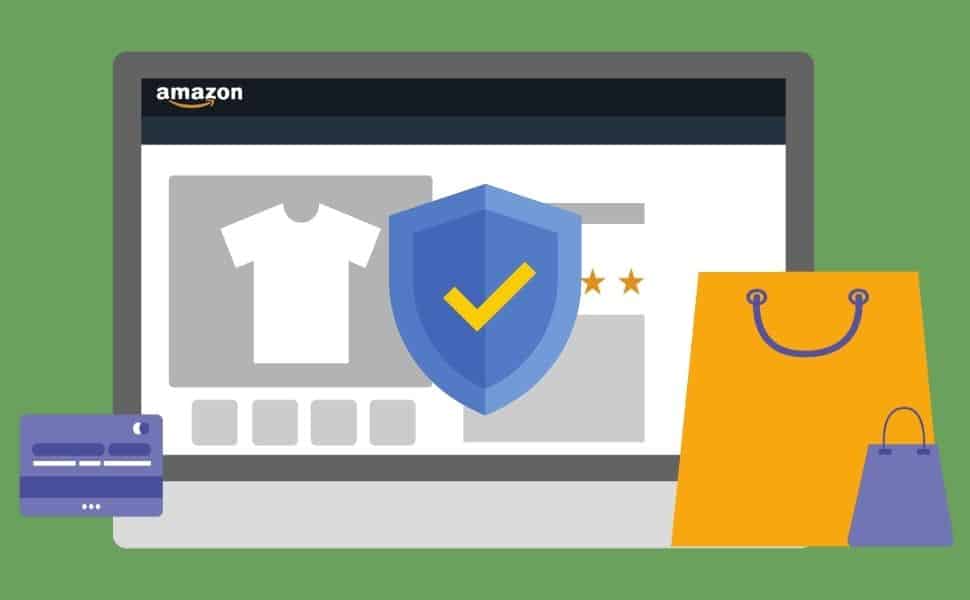Every Amazon seller should be serious about protecting their listings from fraud.
Stop being vigilant for just a moment, and you’re likely to be a victim of unscrupulous selling practices. Shady practices like counterfeiting and product listing hijacking can be fatal, resulting in an abrupt suspension of your account.
And just like that, you could be out of business!
Of course, as a merchant who cares about their brand reputation on Amazon, you wouldn’t want such a predicament, especially if cybercriminals or unscrupulous operators cause it.
The good news is that you don’t have to be a victim. You can implement security measures to keep infringers and product hijackers.
In this post, we explore how you can protect your Amazon listings and, by extension, keep black hat third-party sellers, malicious competitors, and vengeful agencies at bay.
Why Should You Protect Your Amazon Listings?
There are several reasons you’d want to safeguard your Amazon listings. Let’s check some of these reasons out.
To Gain Complete Control Over Your Brand’s Product Listings
Protecting your listing implies that you have control of your listing’s info that appears on the marketplace, and that you want to promote your merchandise. Put differently; you can sleep easy knowing that all of your brand’s information is safely in the right hands.

On top of that, you won’t have to be concerned that a crooked third party could be changing your listing’s information.
Adding security to your Amazon listings can also help safeguard your advertising data. That way, you can block other stores from running dubious ads mimicking your brand to draw traffic to their merchandise.
To Boost Your Sales and Increase Conversions
You see, when you take care of fraudulent listings, you’ll trigger a natural increase in sales. Why? Well, because customers will always find your products every time they type your search terms on the marketplace.
To Leverage Better Support From Amazon
Imagine that you’ve added an extra security layer on your Amazon listings. Still, you notice attempted fraud around your brand and products.
In such an incident, you can enjoy remarkable Amazon support. Think of it as a way to prompt quick and efficient support since you’ve taken proactive measures to prevent black hat operators from hijacking your listings.
What Tactics Do Black Hat Companies Use to Attack Amazon Listings?
Black hat operatives use all manner of tactics to attack Amazon listings. It makes perfect sense, therefore, to familiarize yourself with these schemes.
That way, you can identify an attack and, most importantly, know how to defend your listings.
Product Detail Page (PDP) Abuse
Product detail page abuse can cause untold harm to your Amazon listings and brand. In most cases, it involves hijacking and adding restricted information to your detail page.
Hijacking occurs when an unauthorized person accesses your page, changes your product, or adds false information.
When restricted information is added to your detail page, Amazon will flag your products as adult products or pesticides.
So, it is essential to ensure that your product doesn’t have adult-themed or pesticide information by reviewing your backend listing.
If you spot a fictitious claim, it is in all likelihood added by an attacker with the intent of taking down your listing.
Fake IP Claims
Malicious sellers and services can submit fabricated IP claims to Amazon. The trickiest part is that Amazon leaves you with the task of proving that the claim is false.
You can start by investigating the complainant. You need to establish if they’re the legitimate rights owner or agent. You can then dispute the claim if they’re not the genuine rights owners.
Fake Negative Reviews or Phony Customer Complaints
Product reviews are crucial on Amazon. In fact, many customers filter out products that don’t achieve a specific rating, say a four-star average.
Still, mischievous black hat companies can manipulate the review system. The tactic is simple: they’ll visit your products and leave many fake reviews without necessarily purchasing your merchandise.
While it’s easy to detect reviews left without the customer buying anything, things can become complicated if the attacker bought the item before leaving the negative review. These reviews appear genuine, making it harder for you to take them down.
Manipulating Searches with Click Farms and Bots
Sure, Amazon supports smart product recommendations and customized search filtering. This is all thanks to machine learning.
Yet, attackers can manipulate this system, changing recommendations that show up. A black operator can use click farms or bots to visit Amazon and perform actions such as clicking on your products or searching your keywords and altering the results.

Since Amazon’s system analyzes user data to determine the most relevant result, it can be challenging to differentiate between fake and real users.
Be sure to watch your keyword rankings – report to Amazon if the keywords keep constantly appearing in irrelevant results.
Fake Inventory Listings
Listing pages show every merchant offering a specific product irrespective of how long they’ve been selling on the marketplace.
While this is a good initiative, it opens doors for con operators to get you listed for merchandise you don’t stock. This implies that attackers can fulfill customer orders with counterfeit products.
Once Amazon has compelling evidence that you’ve listed a counterfeit product, it’ll suspend your account. The process takes time, meaning that a fraudulent seller can take some of your sales under false pretenses.
How Can You Protect Your Amazon Listing?
Amazon hijackers will always pose a threat to your listings. Here are some strategies you can use to protect your listing and your brand.
Create a Smart Strategy
For starters, if you’re selling a popular product or one in high demand throughout the year, the higher the likelihood is of becoming a victim of black hat operators.
You’ll want to keep an eye on your competitors. On top of that, analyze every complaint to ensure you’re not dealing with fraudsters.
If you experience a sudden rush of uncanny complaints or strange comments that sound fabricated, it could be a case of a competitor buying from you to report your product as fake.
If this happens, monitor your seller dashboard daily to see your listings from a customer’s point of view.
The idea is to determine how many merchants are selling your private label product. If you have more than one, you could be dealing with a hacker situation soon.
Closely monitoring your listing is even more crucial as your sales start to increase, prompting competitors to notice your success.
Implement your strategy to a T. You shouldn’t, for instance, monitor your seller dashboard then ignore API syncs to ensure your listing’s protection.
File a Complaint with Amazon
When your listing is hijacked, one of the most obvious things to do is report it to Amazon.
It is important to mention one thing, though. Your report has to be thorough.
Amazon requires sellers to create pre-proactive plans of action to ensure that appeals are comprehensive and organized.
Sure, you want to control attackers, but at the same time, you’ll need to have concrete evidence showing that you’re a victim of a hijacking.
If you’re accusing a competitor of your misfortunes, you can buy from the offender, document everything that shows the listing is deceitful or fake, and file a claim with Amazon.
Collect as many photos and details as possible, comparing your product with the counterfeit. Remember, Amazon is out to protect its customers, so if you can prove that a malicious competitor is selling a counterfeit product, be sure they’ll act accordingly.
Apply for Brand Exclusivity
Enrolling for Brand Exclusivity enables you to safeguard your ASIN from catalog abusers, interlopers, and black hat operators out to tamper your flat file uploads or take down your Amazon listings.
While Amazon won’t reveal how many Brand Exclusivity programs exist, you may want to contact your Strategic Account and Category Managers to help you enroll.
Applying for Brand Exclusivity allows you to access remarkably powerful marking tools while giving you more control over your listings.
Furthermore, if you have an IP or counterfeit problem, you can leverage a dedicated team to help you submit and escalate your claims.
It is important to mention that applying for Brand Exclusivity won’t necessarily keep hackers off your Amazon listings. You can, however, boost protection as a registered brand.
As a registered merchant, you can leverage Amazon’s Transparency Program, a product serialization service that ensures your products are authenticated before being shipped to the customer.
Think of it as a way of making sure your customer receives genuine items instead of cheap knock-offs.
Brand Your Products Better
You can deter lurking pirates if you develop better product branding on your listings.
A standout logo, for instance, can help customers remember your brand and enable them to identify a counterfeit seller.
In addition, make sure that your product photos highlight the branding on the package and the merchandise. Besides, showcasing your brand’s colors and logos is an excellent way to market your products.
…One More Thing – Push Amazon to Protect Your Listings
Indeed, Amazon can reinstate your listings if you prove that you’re a victim of black hat operators.
However, that doesn’t mean the attackers can’t strike again, especially if there’s enough money to be made. Plus, Seller Central doesn’t offer designated tools to help you protect your listings, exposing you to periodic attacks.
If Amazon reinstates your listing but doesn’t address the root cause, you may want to discuss the issue with a manager or VP-level Amazonian. Let them know your frustration trying to communicate with junior staff.
Some of the things you can include in your report include:
- The number of times you’ve been attacks
- Revenue lost each time
- The time it took to review, resolve and reinstate your account
- Stress the fact that these attacks keep worsening with no end in sight
A Little Security Goes a Long Way
Dealing with black hat companies and hijackers is one of the downsides of selling on Amazon. There will always be malicious people to prey on your success and turn a quick dollar.
On the flip side, selling on Amazon can be a massively profitable venture, so you shouldn’t shy off because of a few ill-intentioned players.
All you need to do is implement the strategies highlighted above as your way to creating a formidable brand with well-curated products and a thoughtful marketing campaign. Soon, your success will outshine the pirates eager to take you down.
Security is just one piece of the puzzle towards success. Link up with Signalytics today and we can work together to ensure your Amazon business is a successful one.

